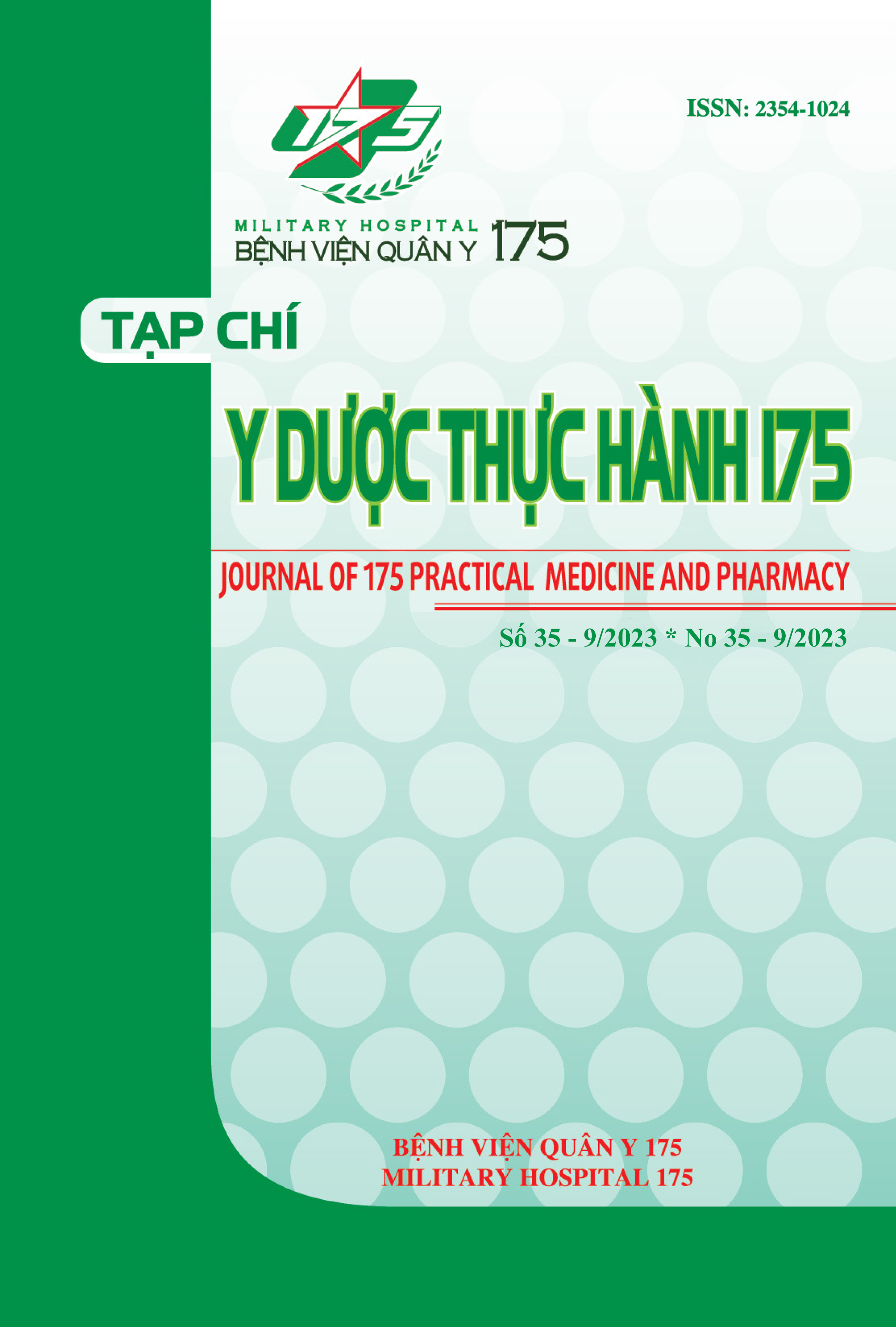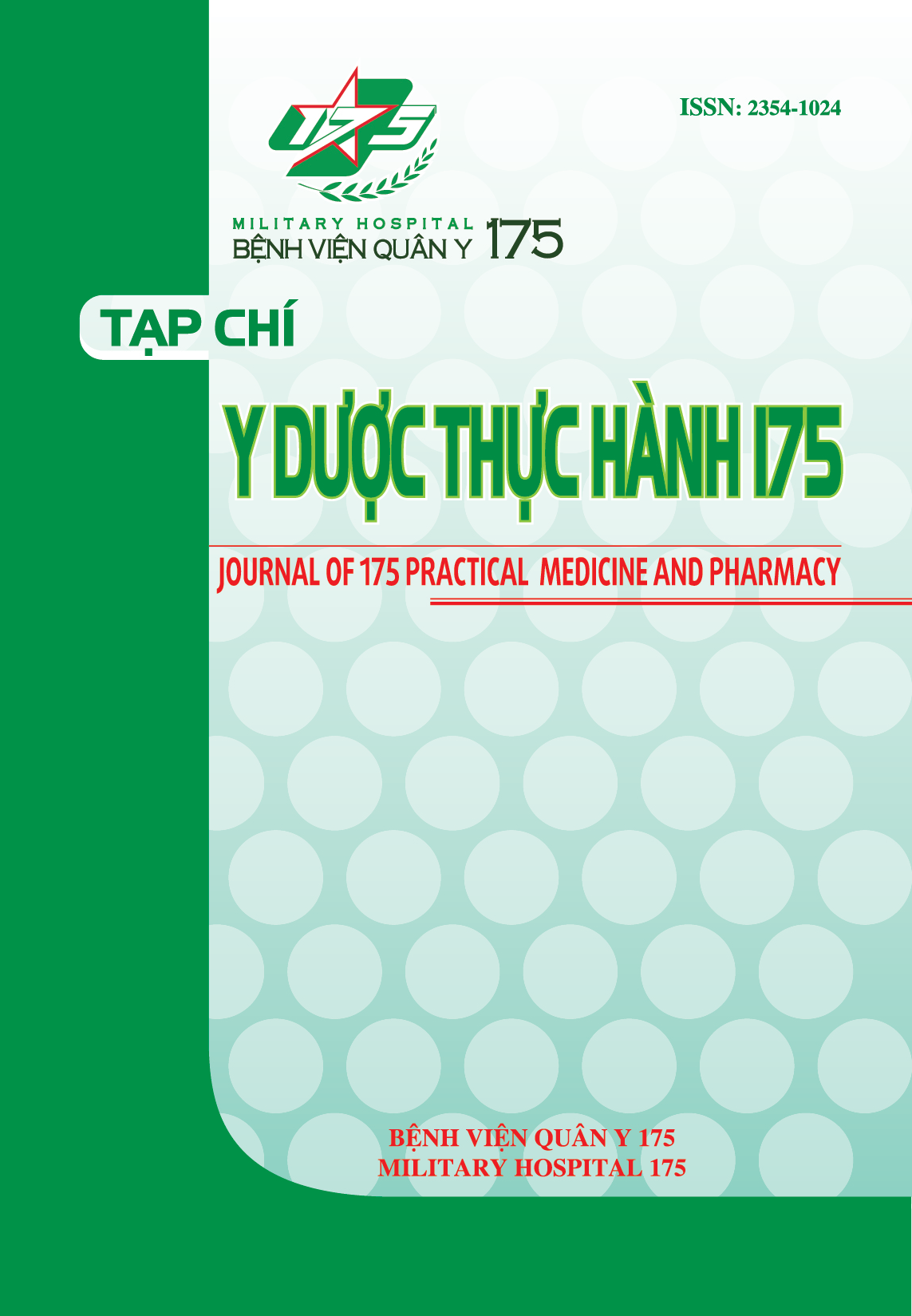ĐÁNH GIÁ KẾT QUẢ BƯỚC ĐẦU CỦA KỸ THUẬT NỘI SOI MÀNG PHỔI NỘI KHOA TRONG CHẨN ĐOÁN VÀ ĐIỀU TRỊ TRÀN DỊCH MÀNG PHỔI CHƯA RÕ NGUYÊN NHÂN TẠI BỆNH VIỆN QUÂN Y 175
Các tác giả
DOI: https://doi.org/10.59354/ydth175.2023.213Từ khóa:
Tràn dịch màng phổi, Nội soi màng phổi, Gây dính màng phổiTài liệu tham khảo
Bộ Y tế (2014), “Hướng dẫn quy trình kỹ thuật Nội khoa, chuyên ngành Hô hấp”, tr 62-72.
Nguyễn Huy Dũng (2012), “Nghiên cứu giá trị của soi lồng ngực sinh thiết trong chẩn đo n tr n dịch màng phổi dịch tiết chưa rõ nguyên nhân”, Học viện Quân y.
Vũ Khắc Đại (2016), “Nghiên cứu vai trò của nội soi màng phổi ống mềm trong chẩn đoán nguyên nhân tràn dịch màng phổi”, Trường đại học y Hà Nội.
Anevlavis S., Froudarakis M. E. (2018), “Advances in pleuroscopy”, Clin Respir J, 12(3), 839-847.
Kiani A., et al. (2015), “Diagnostic Yield of Medical Thoracoscopy in Undiagnosed Pleural Effusion”, Tanaffos, 14(4), 227-31.
Liu X. T., et al. (2022), “Diagnostic value and safety of medical thoracoscopy for pleural effusion of different causes”, World J Clin Cases, 10(10), 3088-3100.
Maturu V. N., et al. (2015), “Role of medical thoracoscopy and closed-blind pleural biopsy in undiagnosed exudative pleural effusions: a single-center experience of 348 patients”, J Bronchology Interv Pulmonol, 22(2), 121-9.
Michaud G., Berkowitz D. M., Ernst A. (2010), “Pleuroscopy for diagnosis and therapy for pleural effusions”, Chest, 138(5), 1242-6.
Niu X. K., Bhetuwal A., Yang H. F. (2015), “CT-guided core needle biopsy of pleural lesions: evaluating diagnostic yield and associated complications”, Korean J Radiol, 16(1), 206-12.
Rodríguez-Panadero F. (2008), “Medical thoracoscopy”, Respiration, 76(4), 363-72.
Saguil A., Wyrick K., Hallgren J. (2014), “Diagnostic approach to pleural effusion”, Am Fam Physician, 90(2), 99- 104.
Tải xuống
Tải xuống: 73










